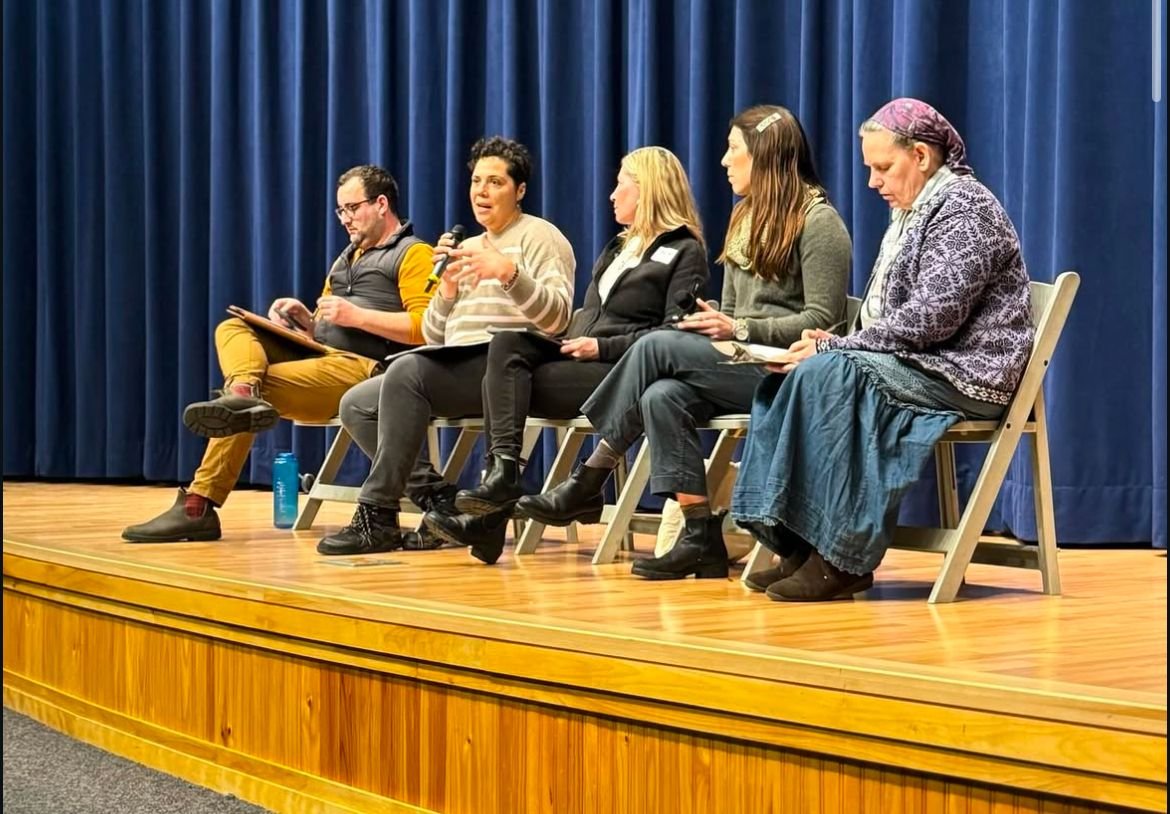Essential Ingredients of Resilience
Panelists at the Adirondack Food Justice Summit
Last week, I had the privilege of participating in the Adirondack Food Justice Summit, which brought together partners from across New York’s Adirondack Park and beyond to tackle the challenge of building a resilient food system that works for everyone.
In this moment when so many of us are facing existential threats—both personally and professionally—this gathering felt particularly timely. As climate change intensifies, economic uncertainties mount, and our communities face unprecedented challenges, it's easy to succumb to despair. Yet what I witnessed at the summit was the profound strength that emerges when we come together with the audacity to hope and create change despite everything.
The conversations, workshops, and connections made at the summit offered powerful reminders about what true resilience requires. Like any good recipe, resilience has essential ingredients that, when combined, create something greater than the sum of their parts.
Here are the three key ingredients I took away from this powerful gathering:
1. Understanding Our History Shapes Our Future
The Pachakuti Collective's powerful session on the effects of colonialism and systemic racism on our food systems reminded us that we can't build better systems without acknowledging where we've been. Learning from our past isn't just about acknowledging harm—it's essential to chart a more just path forward.
“Not everything that is faced can be changed, but nothing can be changed until it is faced.” - James Baldwin
Resilience isn't about starting from scratch; it's about understanding the historical contexts that have shaped our present challenges. When we recognize how intentional policies and systems have created today's inequities, we can be equally intentional about dismantling barriers and creating alternatives.
✅ Key Takeaway: True resilience requires looking backward to move forward—not to remain stuck in the past, but to ensure we don't replicate harmful patterns as we build new possibilities.
💡 Spotlight | Changing the Narrative with Points of Diversity in Roanoke, Virginia
This initiative brought Roanoke Valley residents together to confront racism and build understanding through community meals across diverse neighborhoods. By combining shared meals with personal storytelling and facilitated conversations, they created space for authentic dialogue about racial inequity and healing.
The program balanced historical reflection with future-oriented solutions, engaging 600-700 community members across six gatherings. Participants collectively established priorities for shifting narratives around prejudice and racism, demonstrating how intentional community gatherings can transform relationships and foster shared understanding.
2. Interdependence Matters
If there was one message that resonated throughout the summit, it was this: we need each other, period. The most innovative solutions emerged when we discussed cultivating partnerships with unexpected allies and finding creative ways to support each other's efforts.
In a culture that often glorifies self-sufficiency and independence, embracing interdependence feels radical. Yet natural systems show us that resilience comes not from isolation but from diversity and interconnection. No single organization, entity, or individual can do this work alone.
✅ Key Takeaway: Building resilience requires mapping our ecosystem of partners, identifying gaps, and fostering relationships—especially with those we might not immediately recognize as allies.
🛠️ Resource: Tamarack Institute: Mapping Our Ecosystem Tool
3. Local Action Creates Change
One of the most inspiring aspects of the summit was hearing about the abundance of grassroots efforts taking place in my own backyard. Supporting our neighbors isn't just kindness—it's a form of resistance. These local actions help us build alternatives to systems that aren't serving our communities.
When global supply chains falter or national policies fail, it's local infrastructure and relationships that sustain us. From mutual aid networks to community gardens, seed libraries to neighborhood food shares, the power of local action was evident in every story shared at the summit.
✅ Key Takeaway: Resilience grows from the ground up. Small actions, when multiplied across communities and sustained over time, create the foundation for systemic change.
🛠️ Resource: Mutual Aid: Building Solidarity During this Crisis (and the Next) Book by Dean Spade
Putting It All Together
What struck me most about the summit was how much hope fills a room when people choose connection over isolation, and collective action over individual despair. Even in uncertain times—especially in uncertain times—there is power in coming together.
Resilience isn't a fixed state we achieve once and for all. It's a practice, a process, and a commitment to showing up—for ourselves and each other—even when the path forward isn't clear. By honoring our histories, embracing our interdependence, and taking local action, we cultivate not just survival but the possibility of thriving together.
Want to continue this conversation? Subscribe to my monthly newsletter, where March's theme will focus on resilience and practical strategies for building it in our organizations and communities. Sign up through the link below.

